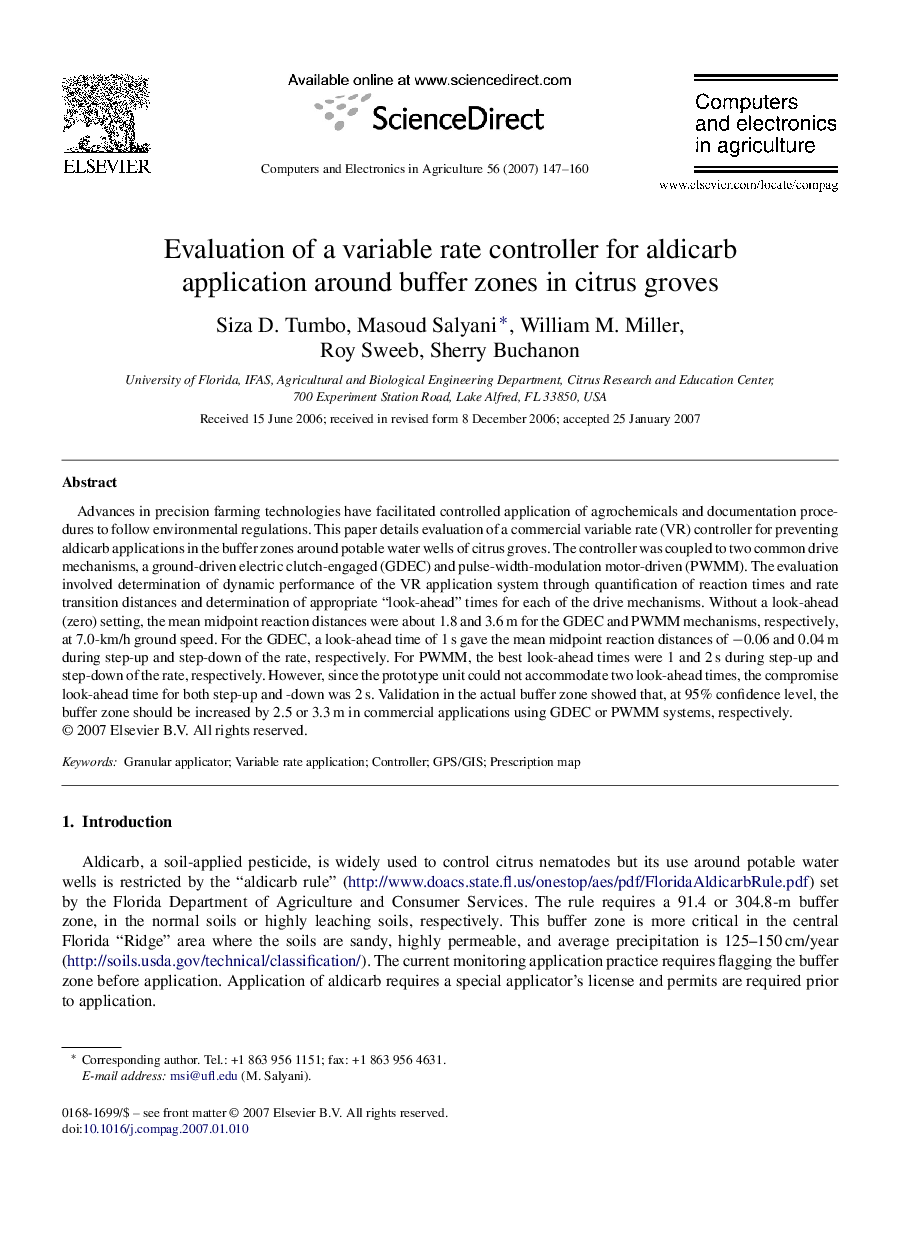| Article ID | Journal | Published Year | Pages | File Type |
|---|---|---|---|---|
| 85529 | Computers and Electronics in Agriculture | 2007 | 14 Pages |
Advances in precision farming technologies have facilitated controlled application of agrochemicals and documentation procedures to follow environmental regulations. This paper details evaluation of a commercial variable rate (VR) controller for preventing aldicarb applications in the buffer zones around potable water wells of citrus groves. The controller was coupled to two common drive mechanisms, a ground-driven electric clutch-engaged (GDEC) and pulse-width-modulation motor-driven (PWMM). The evaluation involved determination of dynamic performance of the VR application system through quantification of reaction times and rate transition distances and determination of appropriate “look-ahead” times for each of the drive mechanisms. Without a look-ahead (zero) setting, the mean midpoint reaction distances were about 1.8 and 3.6 m for the GDEC and PWMM mechanisms, respectively, at 7.0-km/h ground speed. For the GDEC, a look-ahead time of 1 s gave the mean midpoint reaction distances of −0.06 and 0.04 m during step-up and step-down of the rate, respectively. For PWMM, the best look-ahead times were 1 and 2 s during step-up and step-down of the rate, respectively. However, since the prototype unit could not accommodate two look-ahead times, the compromise look-ahead time for both step-up and -down was 2 s. Validation in the actual buffer zone showed that, at 95% confidence level, the buffer zone should be increased by 2.5 or 3.3 m in commercial applications using GDEC or PWMM systems, respectively.
